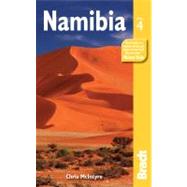
The New copy of this book will include any supplemental materials advertised. Please check the title of the book to determine if it should include any access cards, study guides, lab manuals, CDs, etc.
The Used, Rental and eBook copies of this book are not guaranteed to include any supplemental materials. Typically, only the book itself is included. This is true even if the title states it includes any access cards, study guides, lab manuals, CDs, etc.
Black rhino
The Kaokoveld has one of the world’s best populations of black rhino – a real success story for Namibian conservation. However, if you are lucky enough to find one, and then unlucky enough to be charged by it, use the same tactics as you would for a buffalo: tree-climbing or dodging at the last second. (It is amazing how fast even the least athletic walker will scale the nearest tree when faced with a charging rhino.) If there are no trees in the vicinity, you have a problem. Your best line of defence is probably to crouch very low, so you don’t break the skyline, and remain motionless.
When tracking black rhino in Namibia, you’ll almost always be in the company of two or three professional guides/trackers, usually staff of Save the Rhino Trust. I’ve often been out with them; and the experience can be amazing. On one occasion, we were joined by visitors sporting bright outdoor clothing, who proved disastrously poor at listening to instructions. Having been told to remain dead still because a rhino with a calf was close, one of the group ignored this, stood up and clicked a camera. The rhino charged – it was so fast; this was a very dangerous situation.
Seconds later, as it approached, the trackers all jumped up in unison, shouting and clapping. The rhino changed direction almost instantly, and carried on running into the distance with its calf for miles. It was a tense situation and we were lucky. The one most harmed was the rhino – running for its life, followed by its calf, in 35º heat. We’d put the calf’s life in danger, because one visitor couldn’t listen to his guide.